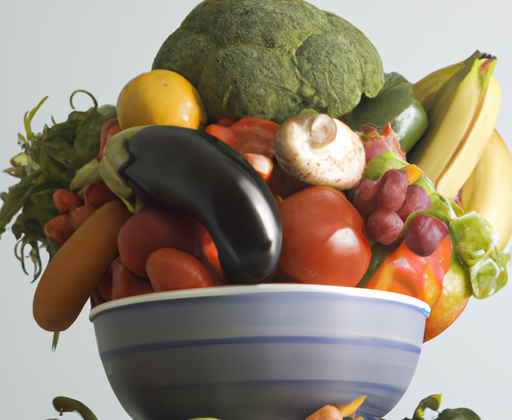Welcome, folks! Are We Ready to Tackle the Food and Water Crisis Today?
Hey, guys, it’s high time we have a straightforward conversation about the global food and water crisis. What is it, you may ask? It’s when there isn’t enough food and water to feed the world’s growing population. It’s when people are hungry, thirsty, and can’t find the means to quell their needs. It’s a crisis that affects everyone, from the poorest of neighborhoods to the richest of cities.
As you may have heard, the current state of the food and water crisis is quite alarming. The situation is only getting worse, and it’s affecting the poorest and most vulnerable populations. The world’s population growth only adds to the problem, as more people need food and water to survive.
What’s Causing the Food and Water Crisis?
Alright, so we know that there’s a major crisis going on with food and water resources. But what’s causing it? Well, there are a few factors at play here.
First off, climate change is wreaking havoc on our agricultural systems. Unpredictable weather patterns, droughts, and extreme temperatures are all making it harder to successfully grow crops and produce food.
Mismanagement of resources is also contributing to the crisis. We’re not using our land, water, and energy resources efficiently, and we’re wasting a lot of what we do have. This is a major problem, especially when there are so many people around the world who are struggling to get access to the most basic essentials like food and clean water.

Speaking of people, population growth is another major contributor to the food and water crisis. With so many people on the planet, it’s becoming increasingly difficult to make sure that everyone has enough to eat and drink.
So, those are the three main factors at play here: climate change, mismanagement of resources, and population growth. But what can we do to fix the crisis? That’s what we’ll be diving into next.
Addressing the Food and Water Crisis: Tangible Solutions
After analyzing the factors contributing to the food and water crisis, I believe that it’s essential to discuss practical solutions that can lead to a better future. From improving crop yields to enhancing access to clean water, there are several ways in which we can combat this crisis effectively.
Improved Crop Yields
To combat the food crisis, we need to address the issue of crop production. We must focus on using sustainable and eco-friendly agricultural practices to improve crop yields. Farmers can implement precision farming techniques that would enable them to manage soil, water, and nutrient levels efficiently. Using biodegradable pesticides, renewable energy, and water treatment processes can also enhance crop yields. Furthermore, educating farmers on the latest technologies and best practices for agriculture can lead to significant improvements.
Water Conservation
The lack of clean water is one of the leading contributors to the global water crisis. To address this issue, we need to promote water conservation. Governments and local authorities can enforce water efficiency measures through regulations and policies that incentivize people to reduce water consumption. Installing low-flow fixtures like showerheads and faucets, using efficient irrigation methods, harvesting rainwater, recycling greywater, and repairing water leaks can help conserve water significantly.
Enhanced Access to Clean Water
Millions of people worldwide do not have access to clean water, which aggravates the water crisis. To remedy this issue, we must invest in water infrastructure and improve access to clean water. Governments and communities can build sustainable water projects in rural areas, such as boreholes, hand pumps, and wells. They can also provide affordable filtration systems, promote hygiene, and distribute water purification tablets. Addressing the gap in access to clean water is critical to mitigating the consequences of the water crisis.
These tangible solutions can effectively tackle the food and water crisis offering a better and sustainable future. It is up to us to adopt these solutions and take action to create a better world.
My Take on Solving the Global Food and Water Crisis
After researching this topic thoroughly, I firmly believe that the solutions to the global food and water crisis are within reach. As daunting as the problem may seem, we can take simple yet effective steps to address it.
Summary of Solutions
Firstly, I believe that improving our crop yields by investing in research and development, and supporting small-scale farmers, will help stabilize the global food supply. Secondly, water conservation is key, and it can be achieved by using more efficient irrigation techniques, recycling wastewater, and reducing water usage in households and industries. Finally, we must work on enhancing access to clean water by building more wells, rainwater harvesting systems, and water treatment plants in developing countries.
Call to Action
It’s time to take action! Governments, international organizations, and individuals alike must work together to address this crisis. We can start by educating ourselves and spreading awareness about the issue, lobbying our representatives to prioritize this issue, and making small sustainable changes in our own lives. Remember, every little bit counts towards creating a more sustainable future for all.
Food, Water, & Crisis FAQ
Why do we need to solve the water crisis?
Well, let me tell you, the water crisis is a serious issue. We need to solve it because without water, we can’t survive. It’s as simple as that. Our bodies are made up of mostly water, and we need to drink it to stay healthy. But not only do we need it for drinking, but also for cooking, cleaning, farming, and manufacturing. And let’s not forget that water is also essential for our environment and the other organisms that live in it, like fish and plants. Without enough water, our ecosystems can’t thrive, and that can have negative effects on the entire planet. So, solving the water crisis is crucial for our survival and the survival of our planet.
How can we solve the water crisis in Zimbabwe?
Honestly, I’m not an expert on this topic, but from my understanding, solving the water crisis in Zimbabwe would involve a combination of short-term and long-term solutions. Short-term solutions could include providing aid to those affected by the crisis, such as delivering clean drinking water or setting up water treatment facilities. Long-term solutions might involve investing in infrastructure, such as improving irrigation systems or building new dams or reservoirs. But it’s not just about providing access to water – it’s also about managing it sustainably. That might mean implementing policies to regulate water usage, educating people on water conservation techniques, or investing in technologies that reduce water waste. It’s a complex issue, but I believe with the right combination of resources, expertise, and collaboration, we can make progress towards solving the water crisis in Zimbabwe.
How to solve water crisis in Pakistan?
Wow, tackling the food and water crisis is a mighty task indeed. To start off, I think it’s important to look towards experts in the field who have successfully addressed these issues in the past. One solution I’ve heard of is implementing rainwater harvesting systems, which can collect and store rainwater for later use. This method can be particularly effective in areas with low rainfall and provides access to a sustainable and reliable source of water that can be used for drinking and irrigation purposes.Another approach is focusing on using technology to improve agricultural practices. Applying precision agriculture techniques, such as using soil sensors and irrigation systems, can help minimize water wastage and increase crop yields. Ultimately, this can result in more food being produced and less water being used, which can help alleviate the food and water crisis.Of course, it’s important not to overlook the importance of reducing food waste as well. By implementing policies that encourage sustainable food production and distribution, like reducing single-use plastics and encouraging composting, we can help preserve resources and reduce food waste.Ultimately, addressing the food and water crisis requires a multi-pronged approach that involves both short-term and long-term strategies. However, by prioritizing sustainability, improving agricultural practices, and reducing waste, we can work towards creating a more resilient and food-secure future.

